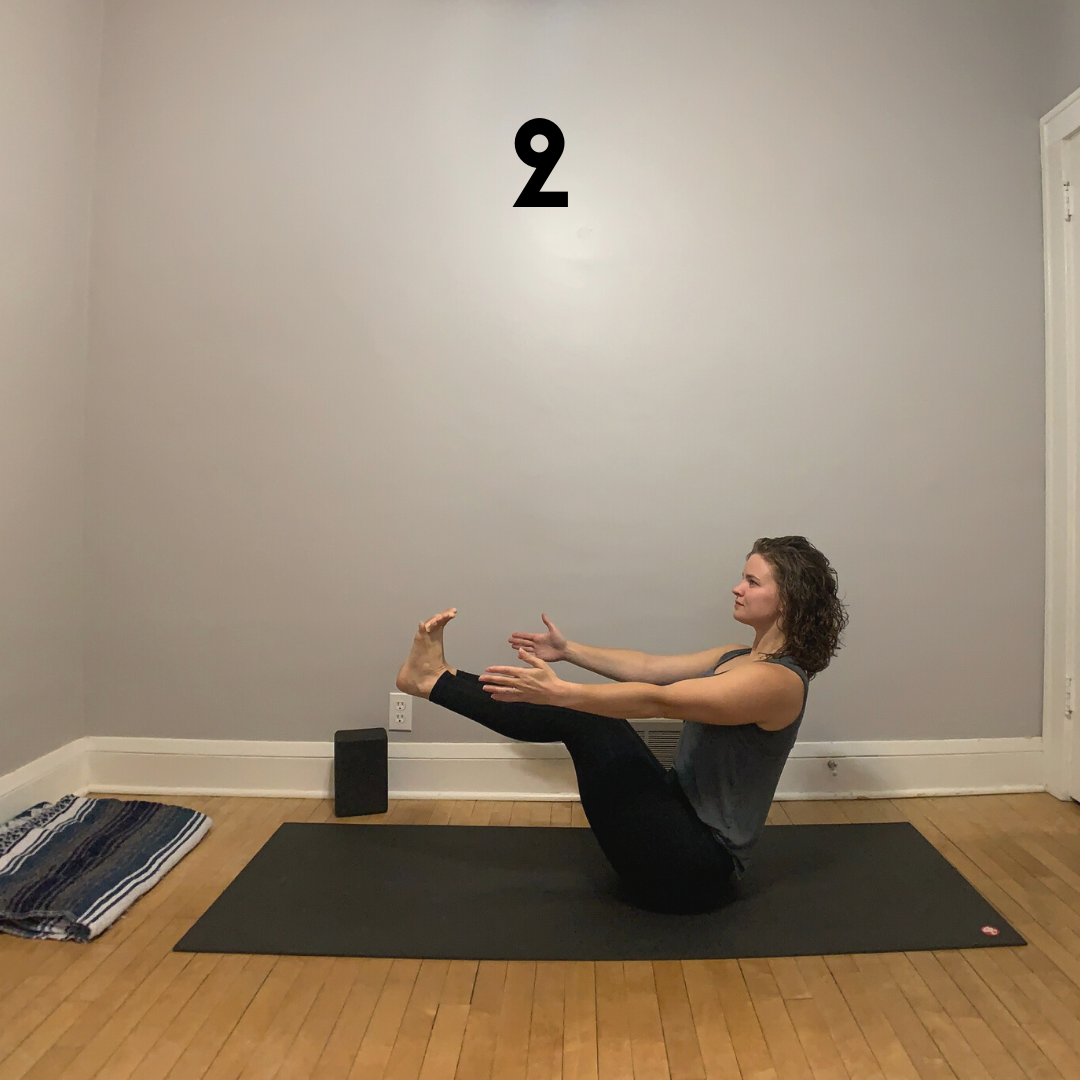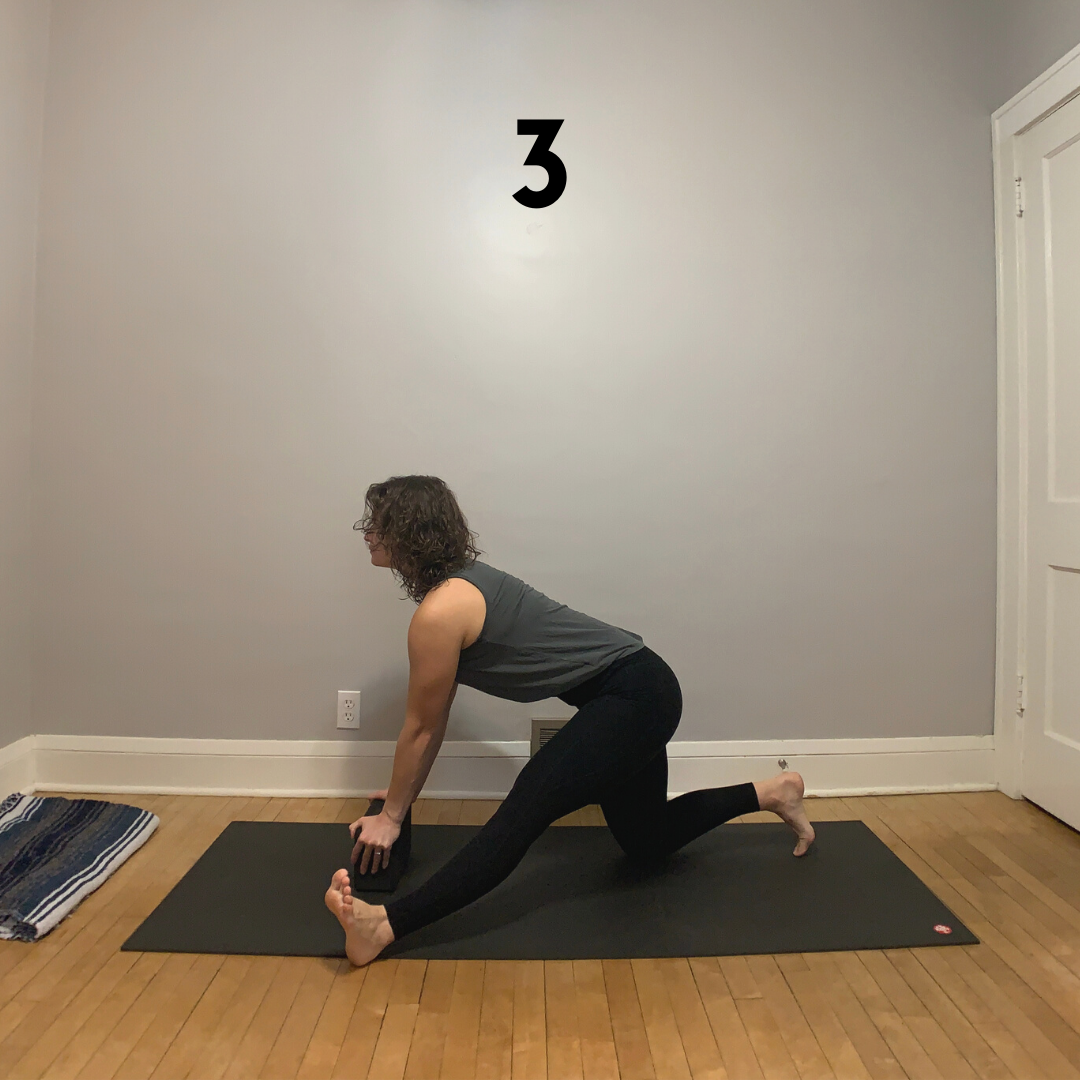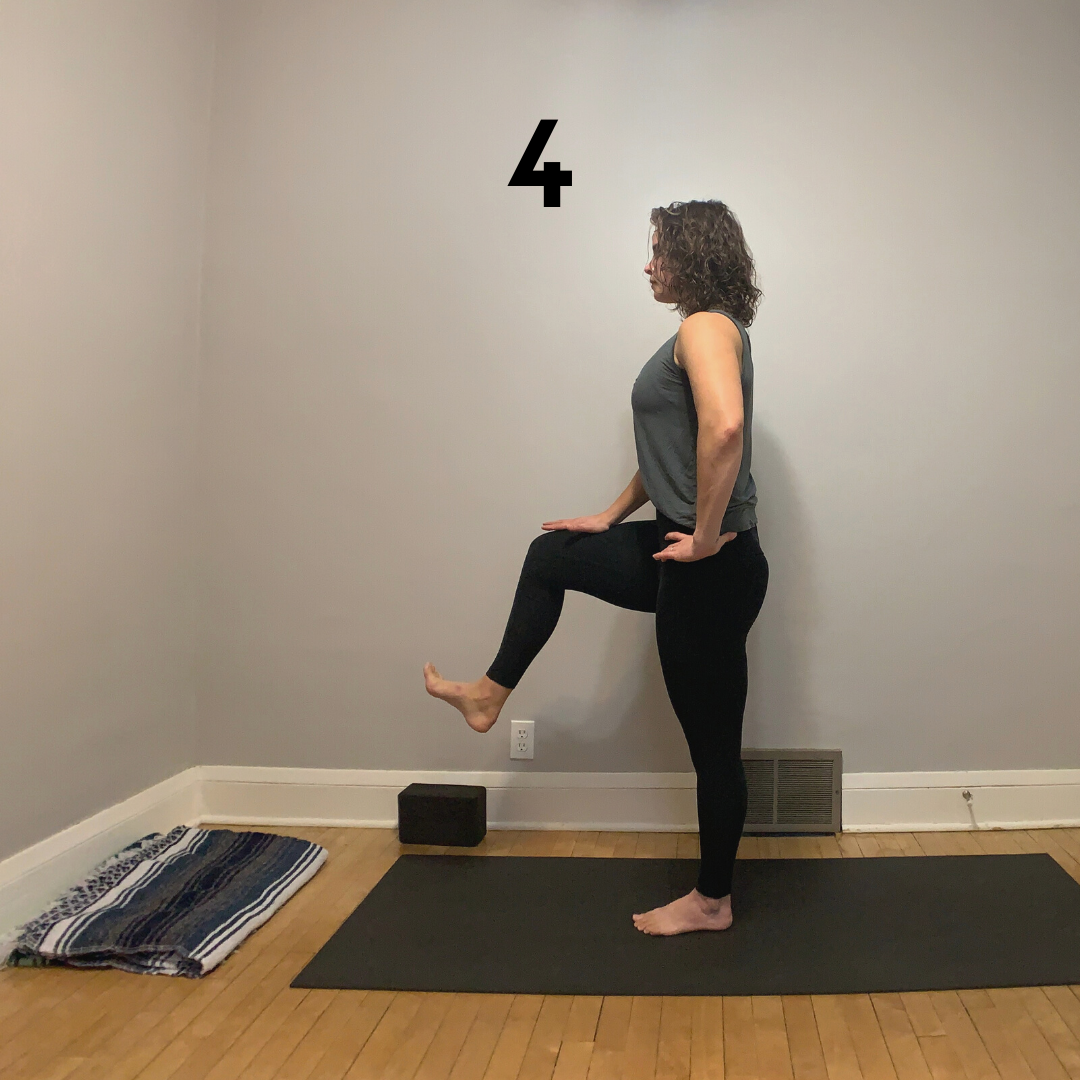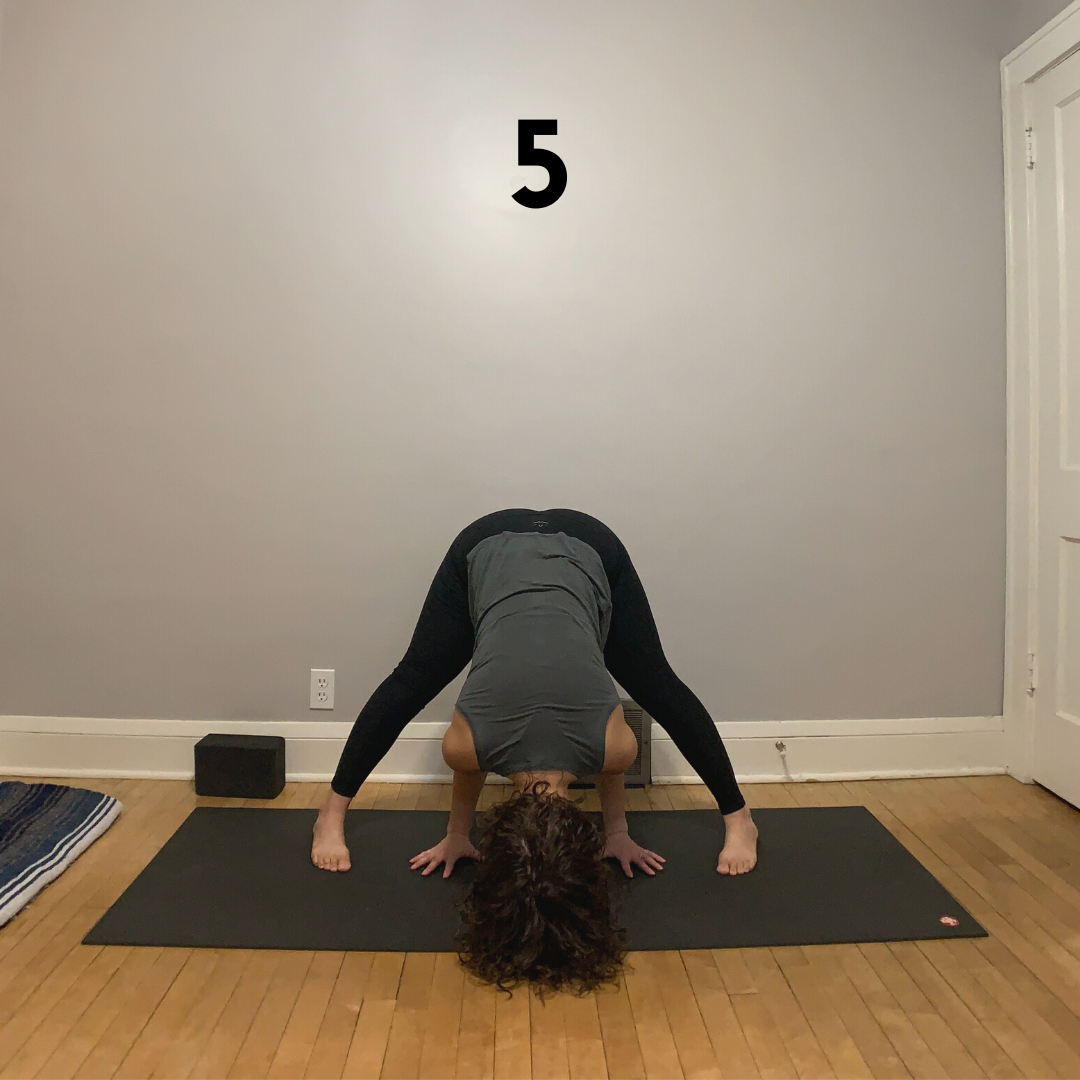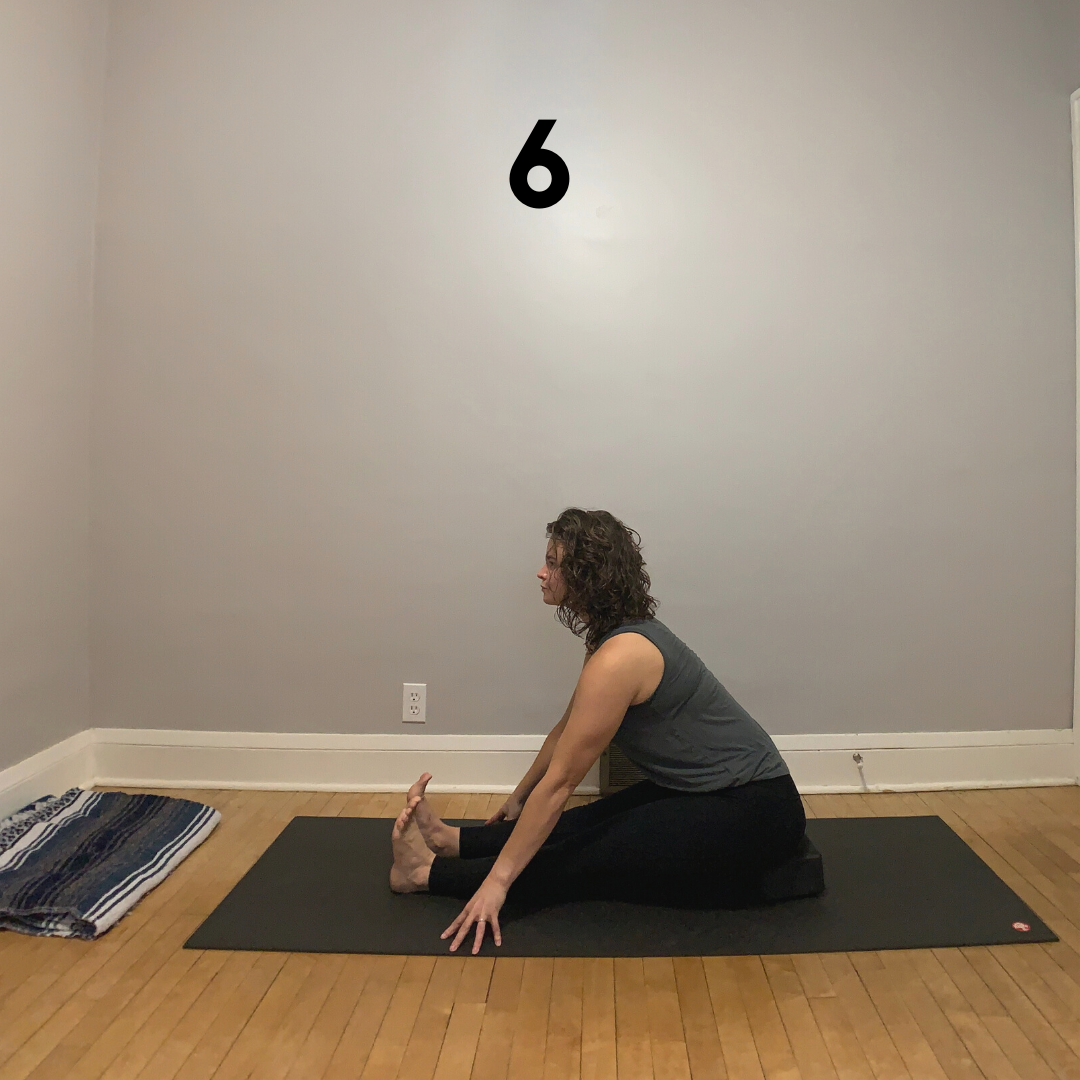Hamstring Helper
So you wish your hamstrings were more mobile? Join the club of millions!
As someone with a long-time hamstring injury I tend to shy away from hamstring mobility work. However, it’s an area a lot of folks are excited about and I don’t want to disregard that interest.
If you’re looking to create more space in your hamstrings, consider the sequence below. Take note that the shapes aren’t just about begging the backside of your legs to get longer. The sequence also takes into consideration the frontside of the hips and their role in supporting hamstring length.
1 - Supta Padangusthasana - Reclined Hand to Foot Variation
My all time favorite hamstring opening posture!
Lay on your back and take a strap or towel with you. Bend your knees and place your feet on your mat. Lift one leg toward the ceiling and place the strap/towel around the ball of your foot. Your lifted leg might be bent and that’s fine! Actively press the sole of your lifted foot straight up and dorsiflex your ankle (pull the toes down toward the shin). With your hands pull straight down.
As you press your heel up, in opposition draw your thigh bone toward your hip socket and press the sitting bone of the lifted leg toward the front edge of your mat. (Heel up, thigh bone down, sitting bone forward.) Stick with the shape for a few breaths and repeat on the second side.
2 - Navasana - Boat
Sit on your behind with your knees bent and feet on your mat. Rock back slightly until you can take some weight out of your feet. You can always keep your toes down, or elevate your shins parallel to the mat. To get your hip flexors to do some work, be sure to lift your lower ribs away from your hips. The higher you lift your legs, or even straighten out your legs, the more your hip flexors will have to work.
The activation of this muscle group will support you in lengthening the backside of your legs - your hamstrings.
3 - Ardha Hanumanasana - Half Splits Variation
From a wide lunge, shift your hips back and lengthen your front leg any amount. You might keep your front leg wide of your pelvis (as pictured above) or center your extended leg with the legs about hip-distance apart. Rather than sitting on your back foot, elevate your pelvis above the back knee.
Flex the ankle of your extended leg. Reach your chest forward and actively draw the sitting bone of your extended leg back in space. As your chest moves forward, imagine you could suck your extended leg back into its corresponding hip socket. This action gets your hip flexors to fire. Even if your extended leg is bent you’re sure to feel this in your hamstrings!
Switch to second side after five to ten slow breaths.
4 - Eka Pada Tadasana - One-Legged Mountain Variation
This shape doesn’t necessarily lengthen your hamstrings, but it encourages your legs to stay strong and brings awareness to the hip flexor region.
Stand with your feet hip-distance apart. Shift your weight into one foot and elevate the opposite leg with the knee bent to about 90 degrees. You might stay right there. The simple action of elevating the leg causes the hip flexors to work. To add more effort place your hand on your lifted thigh. With balanced pressure, press your hand down into your thigh and push your thigh back into your hand. Switch sides once you start to feel the hip flexors fatigue.
5 - Prasarita Padottanasana - Wide-Legged Forward Fold
Step your feet about four feet apart. (This is a totally general stance. At the very least have your feet wider than your hips.) Point your toes straight forward or slightly turn them in toward the center. Hinge forward from your hips and place your hands on your mat, legs, or up on a prop. Consider placing your hands somewhere that allows you to maintain a long-ish spine.
Ground your heels and tip a little weight into your toes. Even if your knees are bent, actively lift your sitting bones up and allow the front rim of your pelvis to rock forward over your thigh bones. Just like Half Splits, imagine you could pull your thigh bones up into your hip sockets to get your hip flexors to activate.
Stay active in the shape for ten slow breaths.
6 - Paschimottanasana - Elevated Seated Forward Fold Variation
Take a seat on the front edge of a yoga block or folded blanket. Extend both of your legs forward any amount. Keep in mind that your legs do not have to be straight in order to benefit from the shape.
Before you hinge forward, lengthen your lower ribs away from your hips and sit tall. As you do hinge forward think of moving your sitting bones back and rock the front rim of your pelvis forward over your thigh bones. Rather than going to your deepest fold, stop a few inches higher. Stay at that point for a few breaths and imagine you could suck your thigh bones into your hip sockets and you actively press your heels forward.
I encourage folks to try this posture with their tail elevated. Why? When you’re seated on the floor most bodies feel like their sitting bones are stuck and don’t have the freedom to shift back. By slightly elevating the tail you create space for the sitting bones to shift back which allows the pelvis to rock forward over the thigh bones.

